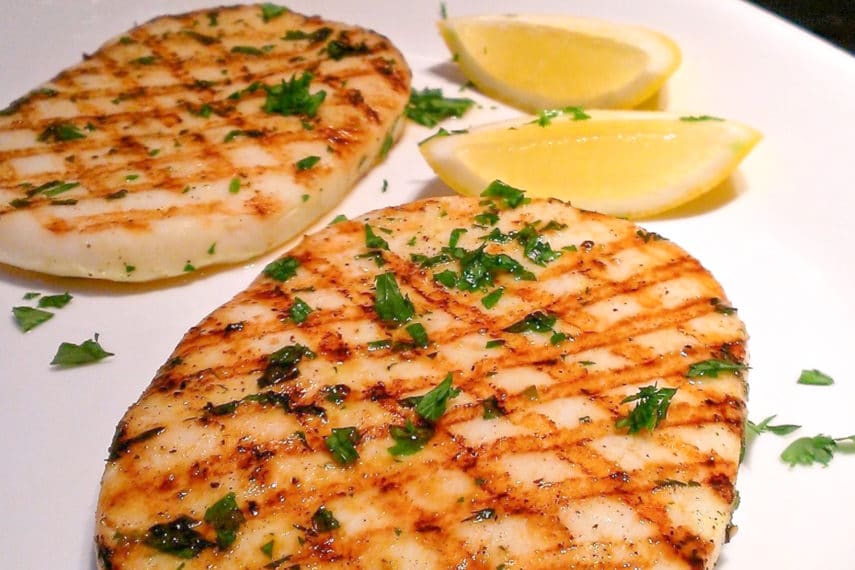Calamari: a culinary delight adored by seafood lovers around the globe. Whether you’re savoring it as crispy fried rings or enjoying it in a rich Mediterranean stew, calamari invites you to dive into its unique flavors and textures. But what exactly is this elusive delicacy?
The journey of calamari goes beyond just being a dish; it’s steeped in history, culture, and nutrition. From the bustling coastal towns of Italy to lively tapas bars in Spain, calamari has become an emblem of shared meals and joyful gatherings. This versatile ingredient offers not only delicious taste but also numerous health benefits.
In this ultimate guide to calamari, we’ll explore everything from its intriguing background and nutritional value to mouthwatering recipes that showcase its versatility. Get ready to elevate your culinary experience with this beloved seafood treat!
What is calamari?
Calamari is the culinary term for squid, particularly when prepared as food. This mollusk boasts a mild flavor and firm texture that make it a favorite in many dishes worldwide.
Typically served fried, grilled, or stuffed, calamari can be enjoyed in various forms—from elegant appetizers to hearty main courses. Its versatility shines through in numerous cuisines, each offering its own spin on this beloved seafood.
Beyond its taste appeal, calamari holds an intriguing place in gastronomy due to its unique anatomy. The body of the squid is often cut into rings or strips before cooking, creating eye-catching presentations on any plate.
Rich in protein and low in calories, calamari not only tantalizes your taste buds but also adds nutritional value to your meals. As you explore different preparations and recipes featuring this sea creature, you’ll discover why it’s cherished by chefs and home cooks alike.
History and cultural significance
Calamari has deep historical roots, tracing back to ancient Mediterranean civilizations. The Greeks and Romans enjoyed squid as a delicacy, often served in elaborate feasts. It wasn’t just food; it was part of their cultural rituals.
In many coastal communities around the world, calamari symbolizes the connection between people and the sea. Fishermen have relied on squid for generations, making it an essential part of local economies.
As global trade expanded, calamari traveled far from its origins. Today, you can find it featured prominently in Asian cuisines as well as European dishes. In Italy, for example, fried calamari is a staple appetizer at gatherings and celebrations.
The dish also reflects regional variations. From spicy Thai stir-fries to classic Italian frutti di mare pasta, each culture adds its unique flair to this versatile ingredient. This culinary journey showcases how calamari transcends borders while preserving its rich heritage.
Nutritional value of calamari
Calamari is not just a delicious seafood option; it packs a nutritional punch as well. This versatile ingredient is low in calories, making it an appealing choice for those watching their weight.
Rich in protein, calamari provides essential amino acids that are crucial for muscle repair and overall health. A typical serving offers around 15 grams of protein, which can help keep you feeling full longer.
In addition to its protein content, calamari contains important vitamins and minerals. It’s particularly high in vitamin B12, vital for nerve function and red blood cell production. The presence of selenium also contributes to antioxidant defenses.
Moreover, calamari boasts omega-3 fatty acids that promote heart health by reducing inflammation. This combination of nutrients makes it a smart choice for anyone looking to enhance their diet while enjoying flavorful meals.
Types of calamari dishes from different cuisines
Calamari is celebrated worldwide, showcasing a variety of flavors and cooking techniques. In Italy, you’ll find calamari fritti—crispy fried squid served with lemon and marinara sauce. It’s a staple in many coastal towns.
Moving to Spain, the dish known as “calamares a la romana” features squid rings battered and deep-fried until golden. This delightful tapas option pairs perfectly with aioli or spicy salsa.
In Greece, grilled calamari often takes center stage at summer gatherings. Marinated in olive oil, lemon juice, and herbs, it’s charred on the grill for that smoky flavor.
Japanese cuisine offers takoyaki—a savory snack made from batter filled with diced octopus but often includes calamari too. These little balls are topped with bonito flakes for an umami kick.
Each culture adds its unique twist to this versatile seafood, making calamari a truly global delight worth exploring!
How to cook calamari at home
Cooking calamari at home can be simple and rewarding. Start by choosing fresh squid. Look for firm, glossy skin without any discoloration.
Begin with cleaning the squid. Remove the head, innards, and bone carefully. Rinse it under cold water to ensure it’s clean.
Next, slice the body into rings or leave it whole for grilling. Marinades enhance flavor; consider using olive oil, garlic, lemon juice, and herbs.
For frying calamari, coat your rings in seasoned flour or breadcrumbs before cooking them in hot oil until golden brown. Aim for a quick fry—overcooking leads to toughness.
If you prefer a lighter option, try sautéing them over medium heat with vegetables like bell peppers or spinach. Add spices to elevate taste.
Serve your dish immediately while warm. A squeeze of fresh lemon juice adds brightness that perfectly complements this delightful seafood treat!
Tips for buying and preparing fresh calamari
When buying fresh calamari, look for clear, bright eyes and shiny skin. The flesh should be firm and slightly translucent. Avoid any pieces that appear dull or have a strong fishy odor.
If you’re purchasing whole calamari, check the tentacles and fins for freshness as well. They should be intact without signs of discoloration.
Preparation starts with cleaning. Rinse the squid under cold water to remove impurities. Gently pull out the head and innards while keeping the body intact.
Remove the thin skin by peeling it off carefully. This step enhances texture during cooking.
Slice calamari into rings or strips depending on your recipe. Marinating in citrus juices adds flavor while tenderizing it before cooking is also beneficial.
For best results, avoid overcooking since this can make calamari rubbery; aim for just a few minutes on high heat instead.
Health benefits of consuming calamari
Calamari is not just a delicious seafood option; it also boasts several health benefits. Rich in protein, calamari helps build and repair tissues, making it an excellent choice for those looking to enhance muscle growth.
It’s a fantastic source of omega-3 fatty acids, which are essential for heart health. These healthy fats can lower blood pressure and reduce the risk of heart disease.
Additionally, calamari is low in calories yet high in nutrients. It contains vitamins such as B12, which supports energy production and brain function.
The minerals found in calamari—like selenium and copper—play crucial roles in metabolism and immune support.
Incorporating this versatile seafood into your diet can offer numerous advantages beyond its delightful flavor.
Common misconceptions about calamari
Many people confuse calamari with the octopus. While both are cephalopods, they belong to different species. Calamari specifically refers to squid, which is often prepared and served in various dishes.
Another common misconception is that calamari is always rubbery and tough. When cooked properly, it can be tender and flavorful. The key lies in not overcooking it; a quick fry or grill keeps its texture delightful.
Some also believe that all calamari comes pre-frozen or processed. In reality, fresh calamari can be found at local fish markets. Choosing fresh options allows for superior taste.
There’s a notion that only upscale restaurants serve delicious calamari appetizers. However, many home cooks enjoy whipping up their own versions with ease—proving this seafood dish isn’t just for fine dining experiences.
Sustainability of the squid industry
The sustainability of the squid industry is a topic gaining significant attention. Squid, particularly calamari, is often harvested at alarming rates. This raises concerns about overfishing and its impact on marine ecosystems.
Several organizations are now focusing on responsible fishing practices to ensure that squid populations remain healthy. Sustainable fisheries aim to balance harvesting with conservation efforts. They implement quotas and monitor stock levels closely.
Consumer awareness plays a crucial role in promoting sustainability. Opting for seafood certified by reputable organizations can encourage better practices within the industry.
Innovative aquaculture methods are also emerging as solutions. Farming squid could alleviate some pressure from wild stocks while providing a steady supply for consumers.
Education surrounding sustainable choices empowers individuals to make informed decisions, supporting not just their plates but the oceans too.
Conclusion
Calamari holds a unique place in culinary traditions around the world. Its versatility allows it to shine in various dishes, from appetizers to main courses. Understanding its history enriches our appreciation for this delicacy and highlights cultural significance across regions.
Nutritionally, calamari is a powerhouse of protein and essential nutrients while remaining relatively low in calories. The numerous types of calamari dishes available showcase creative uses in different cuisines, offering something for everyone’s palate.
Cooking calamari at home can be simple and rewarding with the right techniques. Freshness is key when buying calamari; knowing how to select and prepare it ensures a delightful experience on your plate.
The health benefits are notable too—calamari provides omega-3 fatty acids that support heart health among other advantages. However, several misconceptions persist about its preparation and consumption which can deter people from exploring this dish further.
As we delve into sustainability issues within the squid industry, it’s clear that responsible practices must guide our seafood choices to protect marine ecosystems while enjoying delicious meals.
Exploring calamari opens up an exciting journey through textures, flavors, and cooking methods that elevate dining experiences everywhere. Whether you’re an experienced chef or just beginning your culinary path, incorporating calamari into your repertoire could lead to delightful discoveries at every turn.

















